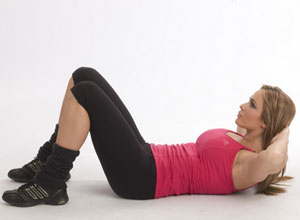
It’s important to have the right amount of energy when beginning a fitness regime. The 50- plus nutrients the body needs are the same for sedentary and active people. No single food or supplement can provide everything. A variety of foods are needed every day. But, just as there is more than one way to achieve a goal, there is more than one way to follow a nutritious diet.
Competitive athletes, sedentary individuals and people who exercise for health and fitness all need the same nutrients. However, because of the intensity of their sport or training program, some people have higher calorie and fluid requirements. Eating a variety of foods to meet increased calorie needs helps to ensure that the athlete’s diet contains appropriate amounts of carbohydrate, protein, vitamins and minerals.
Health and nutrition professionals recommend that 55-60% of the calories in your diet come from carbohydrates, no more than 30% from fat and the remaining 10-15% from protein. The amount of calories you need depends on your age, body size, and fitness program. For example, a 250-pound weight lifter needs more calories than a 98-pound gymnast. Exercise or training may increase calorie needs by as much as 1,000 to 1,500 calories a day for themost active athletes while a desk jockey may just need a 150 extra calories when starting a fitness regime. The best way to determine if you’re getting too few or too many calories is to monitor your weight. Keeping within your ideal weight range means that you are getting the right amount of calories.
Most activities use a combination of fat and carbohydrate as energy sources. How hard and how long you work out, your level of fitness and your diet will affect the type of fuel your body uses. For short-term, high-intensity activities like sprinting, athletes rely mostly on carbohydrate for energy. During low-intensity exercises like walking, the body uses more fat for energy.
Carbohydrates are sugars and starches found in foods like breads, cereals, fruits, vegetables, pasta, milk, honey, syrups and table sugar. Carbohydrates are the preferred source of energy for your body. Regardless of origin, your body breaks down carbohydrates into glucose that your blood carries to cells to be used for energy. Carbohydrates provide 4 calories per gram, while fat provides 9 calories per gram. Your body cannot differentiate between glucose that comes from starches or sugars. Glucose from either source provides energy for working muscles.

Everyone wants the answer to the question “how to lose belly”.
There is no single answer as nothing alone will help to lose belly fat.
For example, if you work out very well the entire morning and then in the evening you eat fast foods, fried and processed foods which have high fat content then all your efforts go in vain.
So let us start in a systematic manner and the mystery of how to lose belly will be unfolded.
Cut on your fat intake
All kinds of fried, junk and processed food have to be avoided. They have to be replaced by fresh fruits, vegetables and salads.
Limit sweet snacks to a few times per week
Who does not like sweets in the form of chocolates, cakes, ice creams and pudding? They store extra calories that the body does not need in the form of fat. Belly fat is the most common type of fat, as opposed to the arm fat or the leg fat. Instead of having a sweet snack every day, you can limit them in the form of occasional treats. It can be in the form of rewarding yourself for cutting fat in some other areas or for having cut for a couple days from eating junk food.
Eat fruit everyday
How to lose belly? This is the answer. Fruit is completely water based and it can help you flush the toxins from your system. It will help reduce all kinds of fluid retention, and will also keep you well hydrated. Many fruits are also a good source of fiber, this in turn help in suppressing the appetite. The vitamins in fruit also help the body function better, and it means the body will have high metabolism and efficiency at calorie burning.

Wellness Coach – The wellness and fitness instructor is the person helping the selection for attaining mental and actual well being. They are also known as wellness instructor. They style the exercise routine depending on the actual capability of the selection and train them in the activities for maintaining wellness.
You will need a wellness and fitness instructor application when you wish to work as a wellness instructor. These coaches are required in wellness center, schools, colleges, gymnasiums, etc. They also work as a private wellness instructor and offer the activities and style the diets for gaining wellness. Here we discuss about the job profile of the wellness instructor and offer the wellness and fitness instructor application example. This sample will help you to get clear idea of the details to be included in this type of application.
A Wellness and fitness Instructor will help you management the major factors that control your life, such as excess weight or loss, dietary routines, exercise, stress, using tobacco, alcohol consumption and many other factors. Thus, your wellbeing issues will be maintained and you will become less inclined or not inclined at all to hypertension and diabetic issues. However, you cannot responsibility your body’s genes, if you have it. You can only management it with the help of any adverse health coach. When you are under the care of a qualified instructor, there are possibilities that you will meet your objectives quicker than otherwise. Hence, make sure you employ someone who has a legitimate document in medical insurance wellness training.


